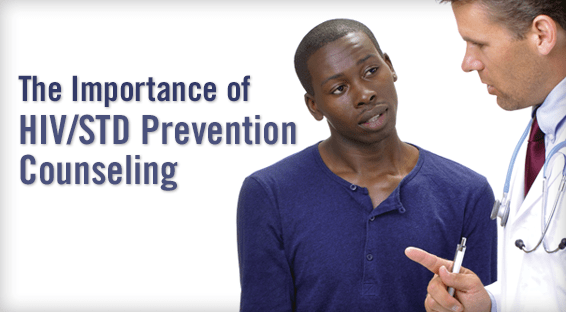According to recent estimates, approximately 1.1 million people in the United States are living with HIV, and about 50,000 new HIV infections occur each year. “Reducing transmission remains a key part of HIV prevention,” says Yuko Mizuno, PhD. “To further reduce the spread of HIV, an increased emphasis must be placed on preventing transmissions among individuals who already have the infection.” Research shows that those who are aware of their HIV status are more likely to take the necessary steps to protect themselves and their partners.
Dr. Mizuno says that healthcare providers play an important role in offering critical health information and services to patients living with HIV. “In fact,” she says, “the CDC recommends that providers offer prevention counseling for HIV and sexually transmitted diseases (STDs) to all patients living with HIV during their routine clinic visits. Few studies, however, have explored what percentage of people in the U.S. who are living with HIV and receiving care are exposed to HIV/STD prevention counseling and whether it is reaching those who need it the most.”
Examining New Data
To better understand who is being reached with HIV/STD prevention counseling and how well they are being reached, Dr. Mizuno and colleagues published a study in AIDS evaluating data from the CDC’s Medi-cal Monitoring Project (MMP). The MMP provides nationally representative estimates of behavioral and clinical characteristics of HIV-infected adults receiving care in the U.S., including the estimated prevalence of exposure to HIV/STD risk-reduction interventions.
According to the findings, only about 44% of people living with HIV in active care reported receiving one-on-one HIV/STD prevention counseling from their healthcare providers (Table). About 30% reported receiving one-on-one HIV/STD prevention counseling from prevention program workers, and 16% reported participating in a small group risk reduction intervention. “Minority race and ethnicity, low income, and risky sexual behavior consistently predicted greater exposure to HIV/STD risk-reduction interventions,” adds Dr. Mizuno.
In addition, the CDC study found that nearly 40% of people who had risky sexual behaviors and nearly 40% of those who self-reported an STD in the past year did not receive any risk-reduction interventions. The following factors were significantly associated with patients with HIV being exposed to prevention counseling by healthcare providers:
Assessing the Implications
Dr. Mizuno says that ongoing, brief prevention counseling is a cost-effective measure that can be incorporated into routine care for individuals living with HIV. “Despite the CDC’s recommendations to provide this important risk-reduction service to all people with HIV during their routine visits, less than half of the participants in our study reported receiving such counseling,” she says. “This suggests that there are missed prevention opportunities and there is room for improvement in providing prevention counseling in the clinical setting. Efforts are needed to ensure that more patients are exposed to HIV/STD prevention counseling in the future.”
Overcoming Potential Barriers
It is possible that several barriers may limit some healthcare providers’ ability to provide prevention counseling, such as time and resource constraints and discomfort discussing risky behaviors with patients. However, there are a range of strategies that can be implemented, according to Dr. Mizuno. “Studies show that provider training on brief risk screening methods and risk-reduction interventions can enhance comfort, skills, and motivation of providers. Research also suggests that establishing formal written guidelines for delivering behavioral interventions and developing peer support among clinicians might also help.”
Importantly, the CDC has launched the “Prevention IS Care” campaign, which arms medical care providers with tools that they should use regularly when managing patients with HIV. Informational posters and patient education brochures are provided and can increase patients’ knowledge about HIV, facilitate open dialogue and information exchange, and strengthen patients’ ability to make healthy choices. Continuing education opportunities are also included for medical care providers to update and add depth to their knowledge and skills.
“The hope is that clinicians will use these resources to improve upon rates of HIV/STD prevention counseling,” says Dr. Mizuno. “While it was encouraging to see that HIV-infected people who had fewer resources or who engaged in risky behaviors were more likely to receive HIV/STD risk-reduction interventions, more work must still be done. Those with HIV who engage in high-risk transmission behaviors may need to be prioritized for receiving HIV/STD prevention counseling, with the goal being to get as close to 100% as possible.”


